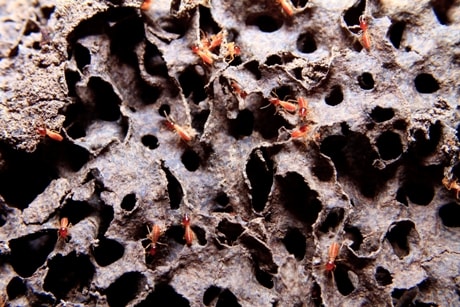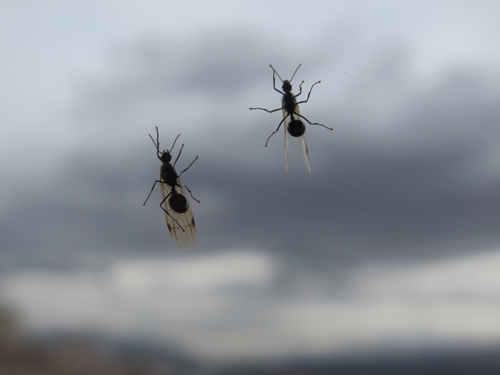All household pests are unhealthy and revolting, and flying ants are a particular problem. They don’t just crawl quietly along the floor or remain hidden behind the basements, they swarm all over you and your belongings. It’s bad enough when ordinary insects spread disease and infest your house, but these ants really get into your face.
Flying is Part of the Ant Life cycle
What’s even worse is that when ants are in the flying stage of life, they’re mating. Virgin queens are seeking to obtain sperm from young male ants so they can found new colonies. Once these queens found a new colony, they use the sperm they receive during the swarming of their “wedding night” to produce worker ants.
The new queen seeks out such sites as a small crack in a piece of wood, maybe in your house. She shuts herself up there and produces her first batch of eggs, using her wing muscles and reserves of fat to live on. Her salivary glands produce food for the first baby ants until they grow into workers capable of going out to forage for food on their own. That’s when you might spot them invading your kitchen or other rooms in your house. The queen continues to produce eggs which mainly grown up into two types of adult workers that are effectively sexless. Their purpose is to work until they drop.
The first type of these ants are the ordinary labourers. They tend the successive generations of ant eggs and larvae and check out your breakfast table for crumbs of food you spilled. The second type are soldiers who guard the nest and the queen inside.
After about two years, the queen produces broods of new virgin queens and male ants capable of reproduction. These ants grow wings. When the weather is warm and dry, in spring or summer, the virgin queens and the males swarm. The reproduction takes place as they fly.
Now full of sperm, the new queens look for places to found their own colonies. Their purpose fulfilled, the male ants die.
How are Swarming Ants Different From Termites?

* Normally, the practical difference to homeowners between ants and termites is that termites eat wood and ants simply burrow tunnels into it. In either case, the wood is ruined if there is no fly pest control to eliminate these insects.
* Both ants and termites have four wings, but ant wings have different sizes. The front pair are much larger than the rear pair. Termite wings are uniform in size.
* Ant antennae have a crook or elbow. Termite antennae are straight.
* Ant wings are smaller. Termite wings are twice as long as their bodies.
* Ants appear segmented, with very thin waists. Termites have thicker waists.
If you have flying ants inside your house, this indicates you have a colony somewhere inside, or they have found a way to enter. If they are swarming outside, new queens may be seeking to found colonies in or close to your house.
For the sake of your health and your home, get advice from a qualified and experienced pest control company such as JDM Pest Control. Call us at 416-729-6568.
